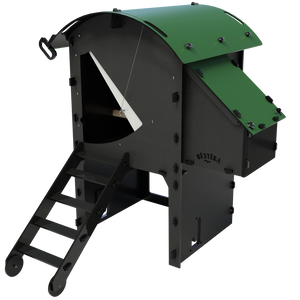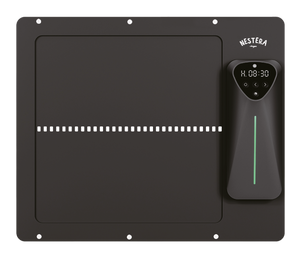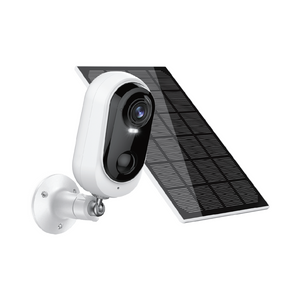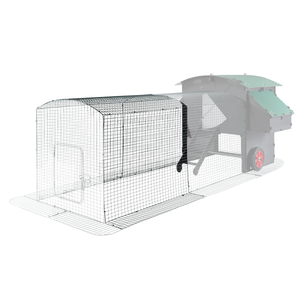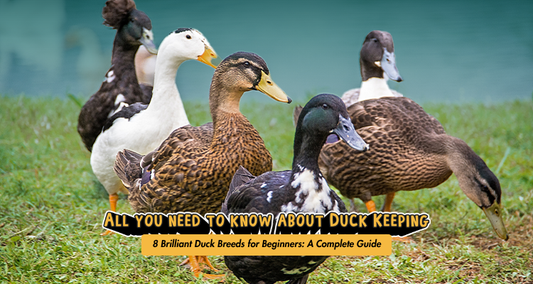You’ve probably heard the word ‘Anthropomorphism’ but not many people understand what it means. ‘Anthro’ means human and ‘morph’ means form, so quite simply it’s how we often treat animals like humans.
There has only been a strong global culture of animal welfare for around 60-70 years. Before this, there was a widespread view that animals and humans were entirely different with significantly less value. In social science, this is known as ‘Anthropocentric’ where humans are considered the most important and sophisticated species in the animal world.
The way that poultry is viewed in small-scale flocks, like backyard flocks, is very different from what we see in large-scale poultry farming. This is a quick look at several ways in which we often anthropomorphise our own flocks.
How do we anthropomorphise our chickens?
Names:
One of the first things we do when we meet someone new is to introduce ourselves or ask them their name. We place huge value on our own names and those we select for our children. We give names to our birds that are unique to them as we place value on them too! We use the names when talking to them or referring to them with another person, just as we would with any friend or acquaintance.

Colouring:
We all look different, dress differently and have our own little quirks. It is very common for keepers to choose a flock where every member looks different or more individual! There is a wonderful array of shapes, sizes and feather colour and patterns available. This helps us recognise and value them as distinct beings.

Decoration:
Some keepers like to decorate their flock’s coop and run for seasonal holidays, as they would their own homes. While the birds have no idea why their environment has changed, they seem to enjoy novel items to manipulate, peck, jump on and investigate.
Health:
When one of our birds becomes ill or injured, we are unlikely to euthanise them immediately. Firstly, we will recognise a change, we will isolate him or her, we will then attempt to find out what’s wrong, find a solution and even take them to a veterinarian. We try to provide the best care we can give with the resources we have available.
Spending:
Chickens can be bought for relatively little cost, especially as chicks or rehomed birds. This is often out of step with keepers set up and ongoing spending. Although some people will cobble together a coop and run from scrap materials, others will invest a great deal of money to keep their birds comfortable and secure.
Treats:
Keepers LOVE to give little snacks to their birds at regular intervals. Food is definitely one of our love languages and it’s a way that we show deep care for one another. You could argue that there is a fair exchange of eggs for snacks but interestingly, even when birds are no longer productive, most keepers treat them the same. It’s not uncommon for keepers to have tasty morsels delivered monthly straight to their door!
Talk Talk:
Although poultry and people are both good at communicating, we don’t share a verbal language. That doesn’t stop your average keeper from chatting away with their birds like they understand every word they say.
Most poultry kept in these flocks associate us with positive experiences and we tried a little experiment once. Using the Nestera camera, we spoke to our birds through it, so although they couldn’t see us, they could still hear us. It was fascinating to see how animated they were, despite our lack of presence.
There is a link between Anthropomorphism and Sentience. Sentience is the belief that animals have feelings. While this sounds obvious to us, the philosopher Descartes believed animals to be automata or machines.
Sentience is the key pillar to animal welfare and animal rights. While we could debate what it should or should not include, the 2005 documentary ‘Earthlings’ argued that humans and animals share the same desires for food and water, shelter and companionship, freedom of movement and avoidance of pain.
Disadvantages of anthropomorphism
While treating our flocks with a high level of sentience can be a good thing, anthropomorphism can cause issues, especially when it leads to misunderstandings of an animal's true needs and behaviours. Here are some examples:
Pecking:
Chickens especially, will often peck one another to establish the flock hierarchy. This hierarchy is very useful for group dynamics.
Each member knows their place and seems to instinctively understand their responsibilities. Although the head hen will be able to access food resources first, she will also protect the flock from threats. While we often find the pecking and temporary suffering of other birds distressing, it’s a necessary behaviour for the smooth running of that group. Fortunately, we have (mostly) perfected the art of negotiation!
Omnivorous Diet:
All poultry is naturally omnivorous, so they like to eat a diet made up of vegetable matter and meat! So while they enjoy fruit, vegetables, pulses, cereals and nuts they also like to eat insects, small mammals, amphibians and reptiles. Seeing two birds fighting over or consuming another animal can be a shock! It probably wouldn’t be our snack of choice but it’s a natural and much desired addition to their nutrition.
Washing:
To stay clean and hygienic we wash ourselves and our clothes using warm water and detergents. All birds, including poultry, use their beaks to spread oils from their preen glands, through their feathers, aligning and cleaning them. Chickens, turkeys and quail also love to use dust baths to clean excess oil, parasitic bugs and old skin cells from their bodies. While it’s ok to bathe a bird's poopy bottom or for a show, they don’t need washing as it can cause stress, skin irritation and damage to feathers.
Coop Design:
Although we refer to chicken coops as ‘hen houses’ the requirements and way they are used are very different to our own homes.
We usually have several rooms in our houses, all with different purposes. Poultry on the other hand, use their coops for 3 things; sleeping, laying an egg and brooding a clutch of eggs. All their other actions are performed outside.
Eating, drinking, flapping, preening, dust bathing, mating, stretching, scratching, foraging, you name it, happens outside! Chickens find safety in numbers and at night they like to perch or huddle together. They feel safe when their space is dark and enclosed as they are descended from the jungle fowl of Asia and live in areas covered with dense foliage.
This is why our coops never have windows. They are still well-ventilated and designed with the needs of poultry, not people, first and foremost.

While anthropomorphism can foster a stronger emotional connection and increase the likelihood that our flock receive good care, it’s important to balance this with an understanding of the animal’s natural behaviours and needs. Ensuring that care practices are informed by animal welfare science, rather than solely by our human emotions or fads seen on social media, can help mitigate the potential downsides.



